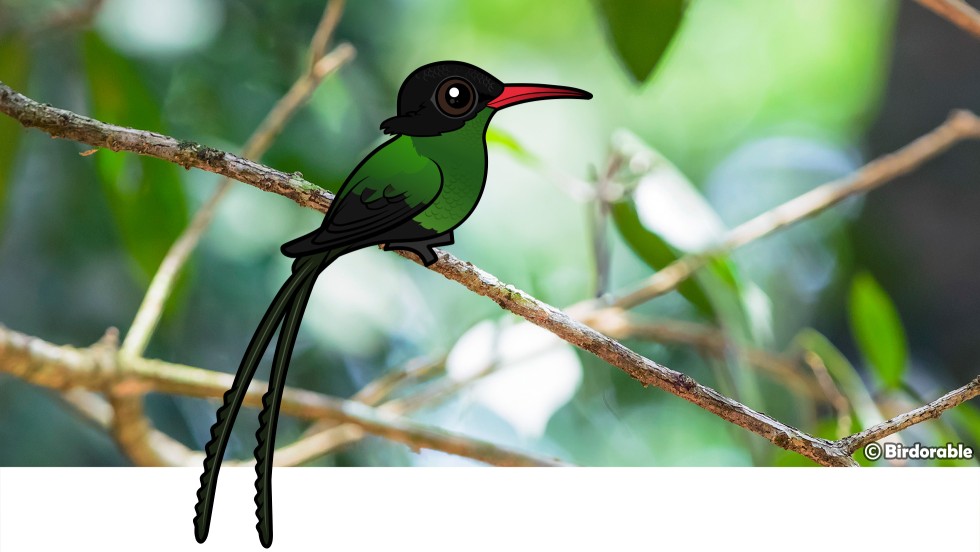Hummingbird Week 2024
Red-billed Streamertail: Jamaica’s Dazzling Doctor Bird

For this Hummingbird Week, we're introducing a fabulous new species of hummingbird to the Birdorable family: the Red-billed Streamertail!
The Red-billed Streamertail is one of the most dazzling and delightful birds you can find in Jamaica. This bird is not only a sight to behold but also holds a special place in Jamaican culture and folklore. It's importance to the country is seen in the fact that it's the official national bird of Jamaica.
The Red-billed Streamertail is a member of the hummingbird family, known for its spectacularly long tail feathers and vibrant colors. The males of the species are especially eye-catching with their brilliant emerald-green plumage and long, ribbon-like tail feathers that can be up to 10 inches long. These streamers flutter gracefully behind them as they fly.
Female Red-billed Streamertails are less flamboyant but equally adorable. They lack the long tail feathers and have more subdued green plumage with white underparts. Despite their differences, both males and females share the characteristic red bill that gives the species its name.
This beautiful bird is endemic to Jamaica, meaning it is found nowhere else in the world. Its preferred habitats are tropical rainforests, gardens, and plantations where it can find ample food sources. The Red-billed Streamertail feeds primarily on nectar, using its long bill to reach deep into flowers. In addition to nectar, it also consumes small insects and spiders, providing a well-rounded diet that supports its high-energy lifestyle.
One of the most fascinating aspects of the Red-billed Streamertail is its courtship display. Males perform an aerial dance to attract females, flying in broad arcs and loops, and even hovering, all while showing off their long tail streamers. This display is not only a visual spectacle but also produces a distinctive whirring sound, adding an auditory element to the performance.
In Jamaican culture, the Red-billed Streamertail is more than just a beautiful bird; it is a national symbol and a subject of many legends and stories. Locally known as the Doctor Bird, this hummingbird is celebrated in folklore as a mystical creature with healing powers. Some tales even suggest that seeing a Doctor Bird brings good luck.
The conservation status of the Red-billed Streamertail is currently stable, thanks in part to its adaptability and the relatively intact habitats in Jamaica. However, habitat destruction and climate change pose potential threats to its population. Conservation efforts and awareness are essential to ensure that this stunning bird continues to thrive in its natural environment.
Birdwatchers visiting Jamaica are often eager to catch a glimpse of the Red-billed Streamertail, and it's no wonder why. Watching a male in full display is like witnessing a living jewel in motion. Their rapid wing beats and dazzling colors make them a highlight for any birding expedition.
The Red-billed Streamertail is a remarkable bird with its radiant plumage, extraordinary tail feathers, and captivating courtship displays. Its importance in Jamaican culture and folklore further enhances its charm. Ensuring the conservation of this endemic species allows future generations to continue to marvel at one of nature's most exquisite avian wonders. We welcome this amazing little flying jewel to our Birdorable family!













Comments
Leave a comment
Thank you!